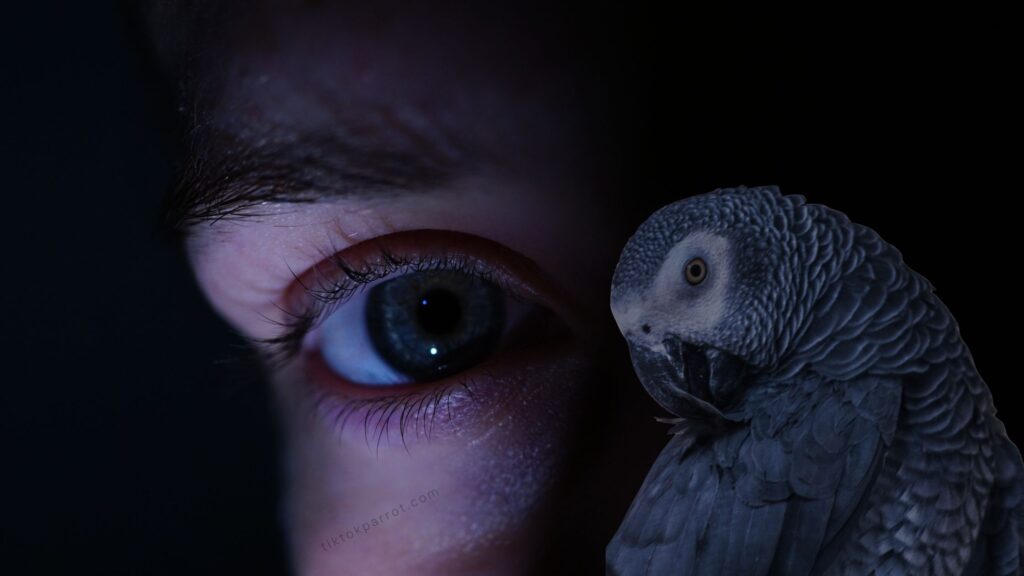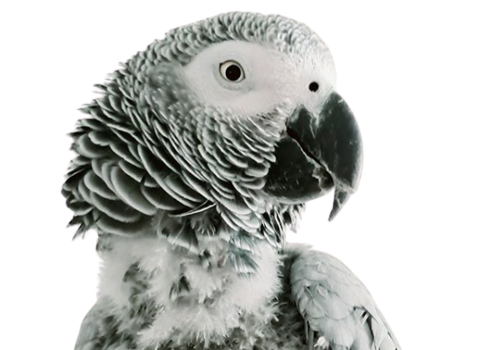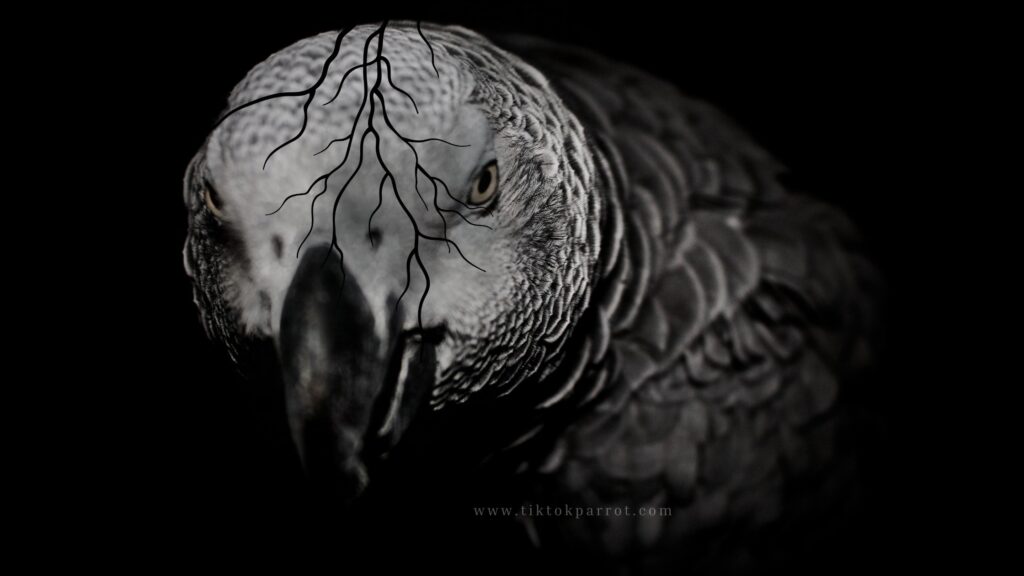Let me tell you a story about my very first encounter with an African Grey Parrot—yes, the ones famously known for their brilliant intelligence and uncanny ability to mimic human speech. The bird was perched in a large aviary, giving me a side-eye look that seemed to say, “So… you’re here to gawk at me, huh?” I almost expected it to start telling me jokes about the weather.
If you’ve ever met one, you know they can be surprisingly witty (and maybe a bit sassy). But did you know that in many parts of West and Central Africa, these charismatic parrots are regarded as more than just comedic geniuses? They’re woven deep into the tapestry of local myths, legends, and spiritual beliefs. Talk about a bird with a sense of humor and a rich cultural pedigree!
Table of Contents
A Brief Introduction to the African Grey Parrot

Alright, picture this: a sleek, grey-feathered parrot with piercing eyes, a bright red tail, and a repertoire of sounds that could rival a stand-up comedian’s soundboard. That’s the African Grey. But beyond the everyday chatter, these parrots hold a special place in many African communities.
They’re not just pets or random forest dwellers—they’ve got centuries of storytelling, spiritual reverence, and cultural connections swirling around them. It’s like they come from a family that everyone in the neighborhood has known forever.
Some people wonder why so much fuss surrounds this species. After all, birds are just birds, right? But trust me, the African Grey Parrot is no ordinary avian. Their mental abilities have been compared to young human children in terms of understanding words, concepts, and even emotions. But here’s the catch: while science tells us about their intelligence, local folklore and cultural practices in parts of Africa tell an even more fascinating tale.
Spiritual or Cultural Significance: Setting the Stage
Have you ever stumbled upon a cultural festival or ceremony that felt downright magical? If so, imagine that feeling amplified by the presence of an African Grey Parrot.
In West and Central Africa—regions that include nations like Ghana, Nigeria, Cameroon, and the Democratic Republic of Congo—these parrots are often seen as messengers between the earthly realm and the spirit world. Think of them as feathery ambassadors who can navigate both spheres with ease.
In certain traditions, the parrot’s ability to “speak” is believed to be a gift from the gods or ancestors. People see it as a symbol of wisdom, guidance, and sometimes even prophecy. When an African Grey repeats a phrase, some interpret it as a sign or a message from beyond. Imagine the parrot perched up high, uttering words that resonate with an entire community. Now that’s a stage presence no Broadway star could beat!
A Bird With A Sense of Humor (And a Spiritual Purpose)
Let’s be honest: if you’ve spent time with an African Grey, you’ll know they can be downright comical. They have a tendency to imitate laughter, ring tones, microwave beeps—yes, the random everyday noises that make you do a double-take. This sense of humor (or mischief) is one reason they’re so cherished in many cultures. After all, laughter is universal, right?
However, humor aside, communities also see depth in the parrot’s mimicry. They might interpret a well-timed word or phrase as a forewarning or a piece of ancestral wisdom. For instance, if you hear “Stay safe” from your African Grey at a strangely appropriate moment, some folks might say, “See? The ancestors are speaking through the parrot!” Skeptical? Perhaps. But you can’t deny it’s a captivating concept.
Myths and Legends: Tales of the Talking Bird
There’s a wide array of myths about African Grey Parrots passed down through generations. You might hear about an ancient king who was guided by a talking parrot to find a hidden spring during a drought. Or maybe a village elder who swore that his African Grey warned him of approaching invaders. Are these tall tales or genuine spiritual accounts? You be the judge. But let’s not forget that myths often carry kernels of cultural truth.
In some storytelling circles, the African Grey is portrayed as a trickster figure—using its mimicry to confuse hunters or mischievous spirits. It might imitate the voice of a person’s loved one or an authority figure to lead them astray or, in some tales, protect them from danger. Think of it like a wise jester who uses laughter and cunning to both entertain and teach moral lessons.
Traditional Ceremonies and Festivals
In certain local ceremonies, you might spot the presence of African Grey Parrots on banners, masks, or even physically present (though that depends on local customs). These birds might symbolize blessings for good harvests or protection from evil spirits. Some communities conduct rituals where the parrot’s feathers are used in ceremonial wear.
But don’t worry—strict cultural protocols often ensure birds aren’t harmed. The idea is more about channeling the parrot’s energy or “essence” than using it as a trophy.
Have you ever attended a gathering where everything feels larger than life? Lights, drums, dancing, chanting—the works? Now picture a ceremonially adorned elder holding an African Grey, or a ceremonial costume with parrot motifs. That’s not just for show. It’s believed these symbolic gestures harness the parrot’s communication skills, bridging the gap between the living and the spirits. Essentially, it’s like having a spiritual translator on hand.
The Parrot as a Status Symbol
Let’s shift gears for a moment and talk about social status. In some parts of West and Central Africa, owning or caring for an African Grey Parrot has historically been a sign of prestige. This is akin to someone driving around a luxurious car today. Of course, we’re not comparing birds to cars—because the bird is definitely cooler. But you get the point.
Why so much status attached to a single bird species? Well, these parrots are not only gorgeous but also notoriously intelligent. Having one might imply that you, as the owner, are wise, respected, or spiritually favored. It’s like telling the world, “I have a direct line to the ancestral realm—and also a fantastic sense of humor.” In a sense, the parrot becomes part of a person’s identity and social reputation.
The Role of Storytelling: Passing Down Traditions
Ever sat around a campfire or in a cozy living room while a grandparent told you spooky, funny, or enlightening stories? In many African communities, oral traditions are paramount. They pass down folklore, moral lessons, and cultural practices through stories. And yes, the African Grey Parrot often makes a cameo.
From cunning parrot tales that warn against greed to heroic parrot stories that champion loyalty, these narratives serve a dual purpose. They entertain (because who doesn’t love a dramatic parrot saga?) and educate, teaching younger generations about respect for nature, family values, and the community.
In essence, the African Grey is a feathered star of the storytelling scene, reminding everyone that knowledge can come in unexpected forms (and sometimes with a cheeky squawk).
Ancestral Connections: Bridges Between Worlds
A significant portion of African spirituality revolves around ancestors—respected elders who’ve passed on but continue to guide the living. The African Grey Parrot is sometimes seen as a vessel for these ancestral voices. It’s almost as if the parrot can offer real-time commentary, bridging past and present with a few carefully mimicked words.
Sound fantastical? Perhaps. But consider how a parrot’s mimicry can catch you off guard. One minute, it’s repeating your name. The next, it’s echoing a phrase your late grandmother used to say. For some families, that’s not mere coincidence—that’s a sign the grandmother’s spirit is near. Whether you believe in such spiritual connections or not, there’s no denying it’s a beautiful cultural sentiment that fosters closeness and remembrance.
Humor in the Midst of Reverence
Now, let’s lighten the mood for a second. Because if there’s one thing that stands out about African Grey Parrots, it’s their knack for comedic timing. Stories abound of parrots who’ve learned to mimic scolding phrases, calling out a child’s name exactly like a nagging parent. Imagine the confusion in a household when the parrot impersonates Mom’s stern tone or Dad’s bark for dinner time. If that doesn’t cause momentary chaos (and eventual laughter), I don’t know what will.
Even in ceremonial contexts, a parrot might blurt out a phrase it picked up at the most inopportune moment—like mid-prayer or during a solemn ancestral rite. Did it just mimic someone’s cellphone ringtone in the middle of a sacred chant? Oops. Some people see these moments as playful signals from the spirit world, reminding everyone not to take themselves too seriously.
Ecological Role and Conservation
While our main focus here is the cultural aspect, it’s worth noting that African Grey Parrots also play an essential role in their natural habitats. They help disperse seeds, maintain forest diversity, and balance ecosystems. Over the centuries, these ecological benefits have merged with cultural reverence—reinforcing why many local communities aim to protect them.
Unfortunately, illegal trapping and habitat loss threaten this species. And you might think, “But wait, they’re so culturally important, so how is this happening?” It’s a paradox. High demand as exotic pets, combined with economic pressures, often undermines centuries of cultural respect. Some elders lament the decline in wild populations and advocate for conservation efforts that honor both tradition and ecology.
Cross-Cultural Exchanges: A Modern Take
Nowadays, African Grey Parrots have fans all over the globe, from casual bird enthusiasts to dedicated avian scientists. Yet, their spiritual and cultural significance in Africa remains lesser-known outside their homelands.
When tourists visit West or Central Africa and witness a local ceremony featuring an African Grey, they might be caught off guard. “Wait, they’re treating that parrot like royalty!” Indeed, because in many ways, it is a kind of royalty—an ancient symbol of communication and wisdom.
Through social media and documentary films, these cultural beliefs are slowly gaining a broader audience. That’s good news for anyone who believes in appreciating the deeper meaning of a species rather than just admiring its ability to repeat our favorite TV catchphrases. And in a world that sometimes feels divided, maybe the African Grey’s bridging of cultures can teach us a thing or two about unity and respect.
Intriguing Tidbits You Never Knew
- Clans and Totems: Certain ethnic groups have clan systems where animals are revered as totems. African Grey Parrots might serve as a totem, embodying the clan’s spirit of communication and wisdom.
- Healing Rituals: Some traditional healers use parrot feathers in rituals believed to cure ailments tied to communication or conflict—like helping mend broken relationships or facilitating dialogue.
- Secret Societies: In certain regions, secret societies revolve around nature’s mysteries and might have ceremonies featuring African Grey imagery, signifying hidden knowledge and the power of the spoken word.
Who knew one bird could be so thoroughly involved in so many facets of human life, right?
Are They A Symbol of Unity?
Rhetorical question time: Could the African Grey Parrot be a symbol of unity for a continent known for its diverse cultures and languages? If you think about it, these parrots cross borders with ease (since they’re found in various countries), yet they share a consistent theme of reverence. It’s as if the bird itself is a living metaphor for how communication can transcend boundaries.
In a sense, we can learn from them. Just as these parrots pick up multiple “languages” (human or otherwise), we too might embrace multilingualism and cultural exchange. Sound far-fetched? Maybe not. After all, if a bird can unify so many legends and traditions, there’s a lesson there about coexistence.
Practical Magic: Everyday Lessons from the African Grey
Let’s take a more practical angle for a moment. Suppose you own an African Grey or are thinking about it. Their mimicry can be more than a party trick—it can open your eyes to the power of words. Are you speaking lovingly to those around you? Because guess who’s listening? That bird, perched in the corner, might just echo back the tone of your household.
There’s a bit of humor there, but also a grain of truth: these parrots pick up on emotional cues. If you consistently use harsh language, guess what your parrot might start repeating? On the flip side, if you fill your home with positivity, you might just hear your Grey singing lullabies. It’s a daily reminder that communication shapes the environment, whether we’re talking about a family home or an entire community.
Bridging Ancient Beliefs and Modern Curiosity
As the world gets more interconnected, many ancient practices risk fading away—or they find new expressions in modern contexts. The reverence for African Grey Parrots is no exception. Younger generations might learn about these customs through museum exhibits, local elders’ stories, or even YouTube vlogs. One day, you might see a teenager in Ghana referencing an old folktale about African Greys on TikTok. Hey, stranger things have happened!
This blend of old and new ensures that the cultural tapestry remains dynamic. Nothing stays frozen in time, and that includes our understanding of these parrots. They continue to adapt, just like the people who revere them, reminding us that tradition isn’t just about the past—it’s also about evolving with the present while keeping core values alive.
A Lighthearted Take: If Parrots Could Vote
Alright, let’s indulge in a playful thought experiment: If African Grey Parrots could run for office in their local communities, would they win by a landslide? Imagine them campaigning with catchy slogans, mesmerizing speeches, and comedic jabs at their opponents.
They already have the voice (or should we say voices?). They could mimic the entire electorate’s demands in their campaigns. “Hey folks, free seeds for everyone!” The crowds go wild, or at least the birds do.
Humor aside, this little fantasy underscores a deeper reality. African Grey Parrots are captivating precisely because they can replicate the human voice and convey emotional nuances. In traditional societies, that skill set has often made them look almost supernatural. It’s a testament to how closely we’re connected to the animal kingdom and how that connection shapes our myths and cultural narratives.
Respecting Traditions in a Modern World
While it’s tempting to adopt African Greys purely for novelty, it’s crucial to remember the deep reverence many African cultures hold for them. If you decide to keep one, you’re stepping into a legacy that spans centuries. That’s a pretty big responsibility, right?
Think about it: you’re not just bringing home a chatty bird; you’re adopting a creature steeped in ancestral stories, spiritual beliefs, and local lore. That’s akin to bringing home a piece of living history. Might as well treat them with the respect you’d offer to any wise sage—maybe with an occasional fruit treat to keep them cheerful.
Bridging the Gap Between Cultures
By now, you might see how African Grey Parrots serve as bridges between different worlds—spiritual and physical, ancient and modern, local and global. In many ways, they’re living testaments to the beauty of cultural beliefs. Whether you consider these tales purely symbolic or genuinely mystical, there’s no denying they enrich our collective human story.
Sure, we could reduce them to “birds that mimic.” But where’s the fun in that? Look deeper and you’ll find centuries of folklore, community bonding, and spiritual reflection woven into those grey feathers. They’re not just echoing our words; they’re echoing our histories, hopes, and imagination.
A Legacy Worth Preserving
So, what’s the final takeaway from this deep dive into the cultural beliefs and folklore surrounding African Grey Parrots? It’s that these remarkable birds are more than just entertaining pets or whimsical mimics. They’re cultural icons that unite generations through tales, ceremonies, and beliefs. Their ability to speak has made them powerful symbols in West and Central African traditions—a bridge between the living and the spiritual, between past and future.
Next time you meet an African Grey or see one in a documentary, remember that you’re not just looking at a bird; you’re beholding a creature revered for ages as a messenger, a trickster, a companion, and a teacher. How’s that for a resume?
If you have any experiences, questions, or fun stories about African Grey Parrots—especially related to their cultural significance—I’d love to hear from you. Feel free to share your thoughts in the comments section below. Let’s keep this conversation going and learn from each other’s experiences!
If you liked this blog, please share it with your family and friends who might also find it helpful. If you love African Greys, join our community of Grey owners! You can meet other owners, share tips and learn from each other.
Stay safe and much love!



